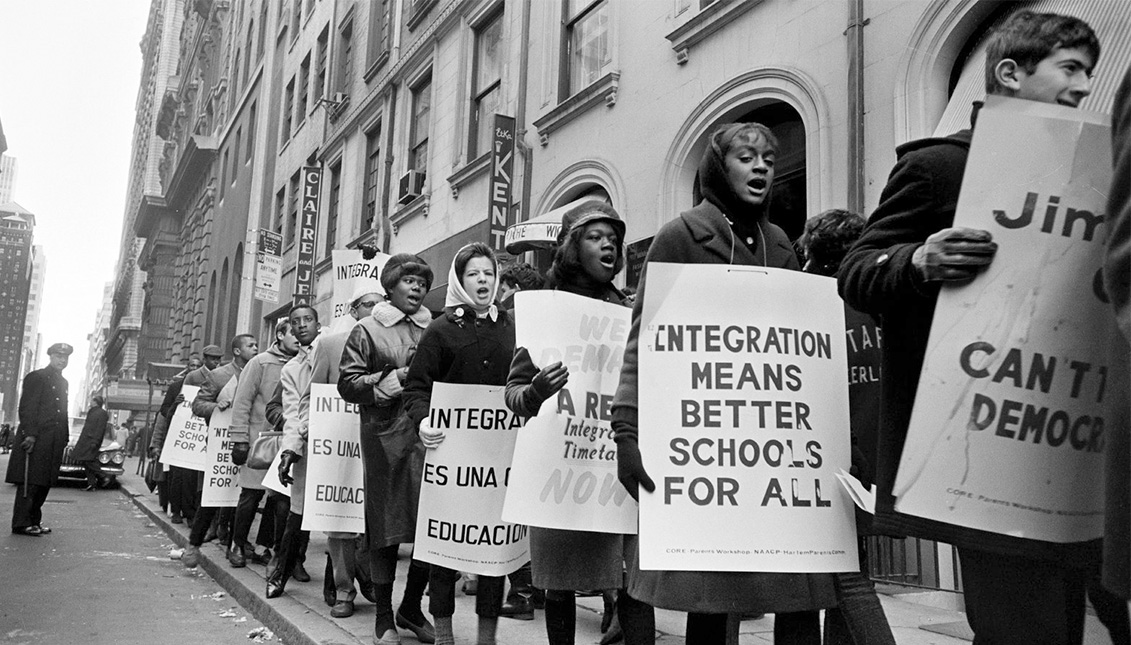
The historic boycott of "multi-racial" schools that united Latinos and Blacks
In July 1964, the families of students of color in New York taught the educational system that "integration" is synonymous with education.
Since the murder of George Floyd, images of Latinos and African Americans united under the banner of Black Lives Matter have not only made us reflect on this country's racism and structural violence against people of color, but have also reminded us that the struggle for civil rights has been long and that other events that were the seeds of this revolution that aspires for greater equality and harmony can be traced back in history.
In 1964, just six months after the historic March on Washington in which Martin Luther King gave his iconic "I have a dream" speech, more than 400,000 black and Latino families and activists joined together to boycott the education system, which called "multiracial" schools a kind of segregationist parade where students of color had much less access to education and even worked four-hour days, according to artist Luis Gallo for Remezcla.
In fact, these activists once reported that the academic results of students attending "multiracial" schools were even worse than in southern institutions, which still operated under Jim Crow segregationist laws — which were abolished in 1965.
"No one can do more harm to these children than the harm that is done to them every day in this public school system," the Rev. Milton Galamison, one of the organizers of the boycott of Bed-Stuy, Brooklyn, told the press on Boycott Day. Many people like Galamison thought the nation's children should have a "racially balanced" education.
The protests in New York were joined by groups like the Black Panther Party and the Young Lords in all five boroughs, and were followed by Latino families, especially Puerto Ricans, carrying signs in Spanish.
RELATED CONTENT
"We memorized songs like 'Jim Crow must go!' and some of the black children even tried to learn the Spanish-language songs that some of our mothers were shouting," Mariana Ortiz, a Puerto Rican who participated in the boycott when she was 13, told Gallo. Her family had moved to Corona, in Queens, a largely black neighborhood, and her father had become involved with the Black Panthers, attending meetings and encouraging other countrymen to do so.
Later, Ortiz told the artist, his father joined the Young Lords, a sort of Latino Black Panthers who fought for minority rights as well as self-determination for Puerto Rico. Many of their tactics, Gallo adds, had been adopted from them, including the battle to abolish inequalities in the New York education system.
Euphemisms are dangerous. Those who discriminate are sometimes experts at twisting the word:
While segregation was illegal in New York City schools since the 1920s, the distribution of Black and Brown populations in much worse neighborhoods consolidated ghettos, with worse schools, and the School Board manipulated attendance areas so white children did not have to share classrooms with Blacks and Latinos.
The protest by families and activists was harshly suppressed and taken up in the press by a host of uncontrolled people. There were also demonstrations against it, especially by white mothers who made no secret of their defense of segregation.
Finally, the public schools responded by creating bus lines so that children from difficult neighborhoods could attend better institutions in mostly white neighborhoods. But to this day, Gallo says, New York remains heavily segregated.











LEAVE A COMMENT: